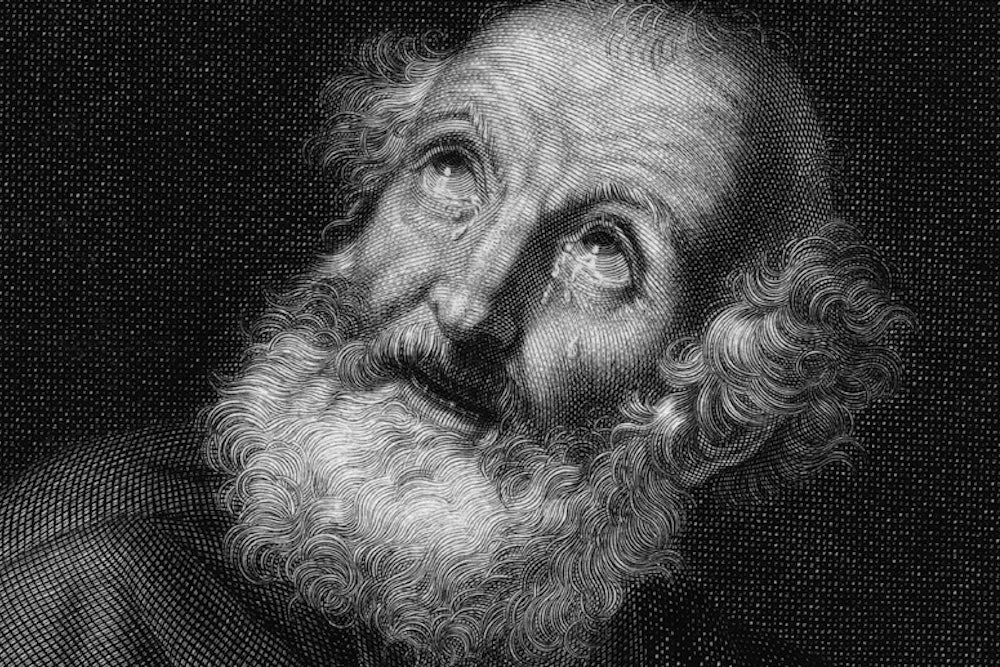In 2008, a group of scientists banded together to explore a question usually left to philosophers and theologians: What happens to the mind during—and after—death? The researchers involved in the AWARE study (“AWAreness during REsuscitation”) believe that scientific techniques can shed light on the mysteries of human consciousness and the mind-body connection. So far, they’re hoping that people who experience heart attacks can offer a window into the experience of dying: If their organs stop functioning, they are technically dead; if they recover, they could have a unique perspective on death.
The AWARE team can’t tell us yet just what happens when we die, but the first part of their study has just been published in a journal called Resuscitation. The study—led by Sam Parnia, an assistant professor of medicine at the State University of New York at Stony Brook—spanned four years, 15 hospitals, three countries, and more than 2,000 cases of cardiac arrest. Of the 2,060 patients Parnia and his colleagues tracked, 330 survived the heart attack; of these, 140 were willing—and well enough—to be interviewed about their experience. Just over two-thirds of the interviewees were male; their average age was 64, though they ranged in age from 21 to 94.
None of these patients showed clinical signs of consciousness (like opening their eyes or responding verbally) while receiving CPR. Of those who were interviewed, 61 percent admitted they didn’t remember anything from their period of unconsciousness, but the rest—55 people—claimed to recall details from this time. (The responses didn’t vary significantly by age or gender.)
Parnia was able to identify a few recurring themes in their memories. The most common motifs include fear, violence, and “a feeling of being persecuted.” More traditional (and pleasant) after-life images like family, animals, plants, and a bright light appeared as well. Five percent said scenes from their past came back to them; 22 percent reported a feeling of “peace or pleasantness,” and a further 9 percent had feelings of joy. Seven percent felt surrounded by a brilliant light; 8 percent believed they’d encountered a “mystical being”; and 13 percent felt separated from their body.
Of everyone who said they remembered something from the time they were unconscious, seven patients claimed detailed memories, and two more had specific auditory or visual memories. One of these patients became too ill to follow up, but the other—a 57-year-old social worker—accurately described the hospital scene from when he was ostensibly unconscious (the beeping of a machine, the physical appearance of doctors who attended to him, the administration of the automated external defibrillator that restarted his heart). Parnia believes this patient experienced about three minutes of consciousness after his heart stopped beating—even though, as he told The Telegraph, the brain usually shuts down 20 to 30 seconds after the heart stops.
Based on his research, Parnia argues for a more fluid definition of death. He says we should think of it as a “potentially reversible process” rather than a “specific moment” in time: Doctors classify the same set of symptoms—the cessation of vital functions—as death if the patient doesn’t recover, but as just a heart attack if he does. The AWARE team are not the only scientists forcing us to reconsider what it means to be dead; cryogenic preservationists, for instance, believe we may be able to freeze ourselves for resuscitation at some point down the line.
Though Parnia has spent years promoting the (pretty outlandish) idea that death is reversible, his conclusion in the paper is relatively mild: He just wants people to take his field seriously. “The recalled experience surrounding death merits a genuine investigation without prejudice,” he writes.
Even so, most of the scientific community isn’t interested in this type of inquiry. “There's a reason that these events are called ‘near’ death experiences,” says Michael Shermer, founder of The Skeptics Society, an organization devoted to debunking superstition in science. “The people who have [near death experiences] are not actually dead,” Shermer says. “In that murky grey area between life and death, the brain is still functioning on some level and can therefore experience something. … If NDEs were evidence for life after death”—as some journalists are extrapolating—“then why do only 42 percent (in this study) have such experiences, and if they represented some real place on the other side, then why do the experiences vary so much?”
Christopher French, a psychology professor at Goldsmith’s, University of London, doesn’t doubt that people have “profound experiences, sometimes including the out-of-body component, when they are in life-threatening situations”—but he explains them as a “complex hallucinatory experience.” The accounts described by Parnia’s patients, French says, may come from people who aren’t really unconscious: They “may well reflect nothing more than patients regaining consciousness and forming a mental image of what is going on based upon what they can hear.” Parnia’s argument rests on the assumption that the brain can’t go on without the heart, but, according to French, doctors aren’t so sure. “We do not know how long the brain can carry on functioning and even maintain some form of consciousness after the heart has stopped beating,” he says. Whatever Parnia—and the public—may want to believe, a few extra minutes of consciousness does not answer any existential questions.
